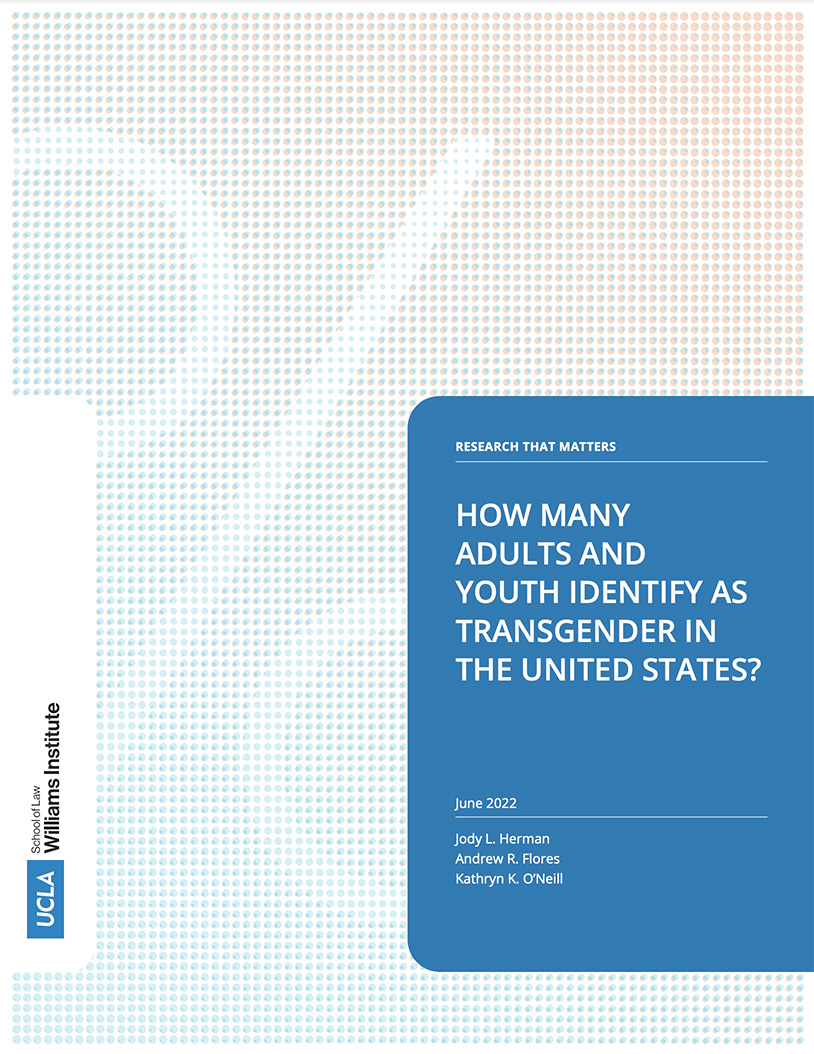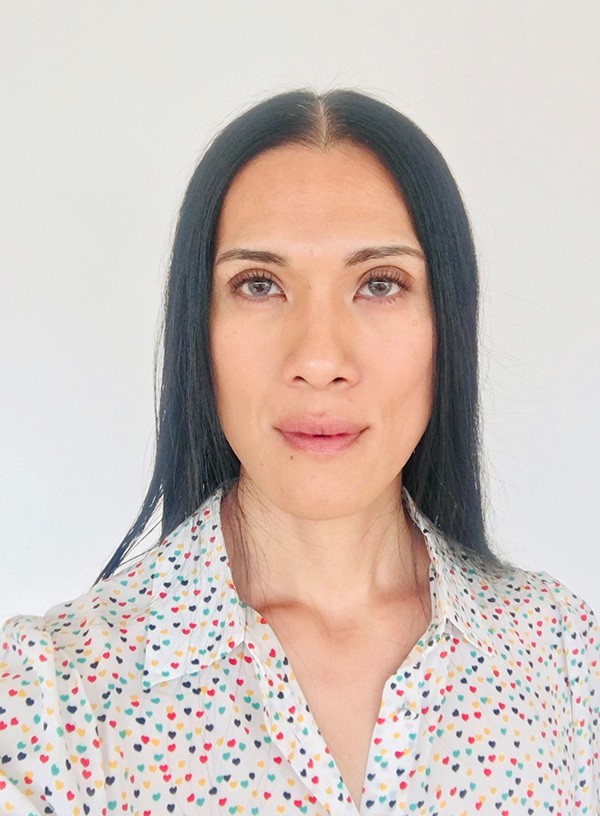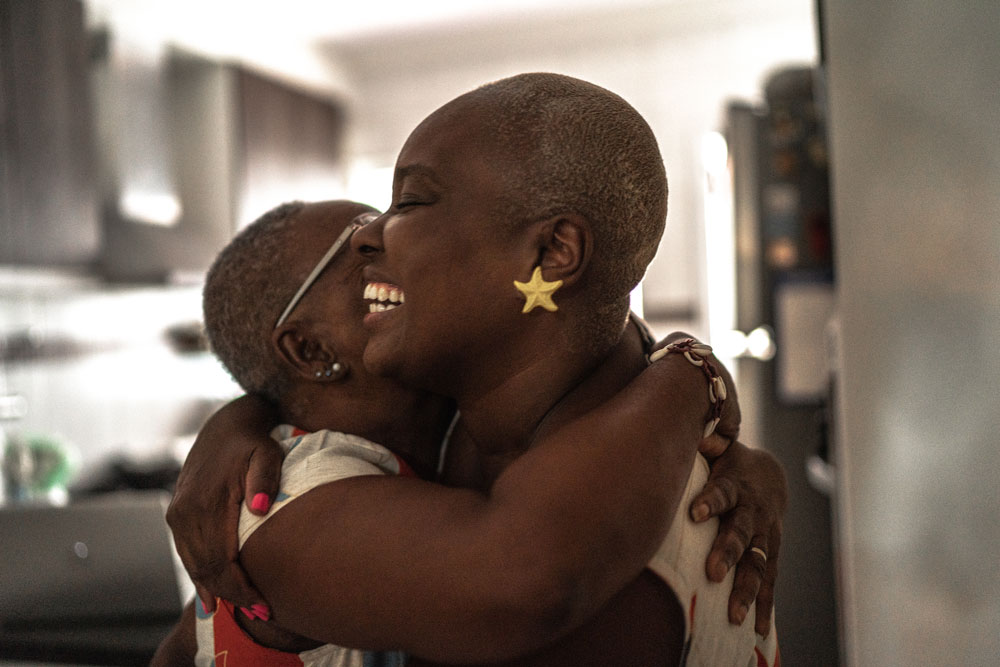Liam Paschall:
That topic is uber important right now because of the legislation and the various laws that are being passed across the US and other countries. We're seeing a lot of discrimination and stigmatism even more than we have in previous years, and I think that not only is it important to really talk about it and make sure that we are being inclusive in healthcare and clinical trials, but it's important to actually put a microscope on it right now. To make sure that we are doing everything we can to benefit the healthcare of the trans community and make sure we're including them, so that we can do better research and get better data on the safety and efficacy of treatments and medications as it relates to trans patients who may be on gender-affirming hormones or have specific lived experiences that we're not aware of. Without that data, we don't know what we don't know, and we haven't had enough data over the past years to really know enough about the impact of gender-affirming hormones, the benefits or the negative aspects of it on our bodies.

Featured Study
In this study there are an estimated 1.6 million transgender people in the U.S. alone and about one-quarter of those people identify as nonbinary.
View StudyAmong clinical research’s underrepresented groups: transgender and nonbinary people. One study estimates there are 1.6 million transgender people in the U.S. alone and about one-quarter of those people identify as nonbinary1. In the latest U.K. census, 262,000 respondents identified as transgender, including 30,000 nonbinary respondents2. In clinical trials, these communities have been nearly unaccounted for. This is likely due in part because both hospital electronic health records and industry electronic data capture systems do not routinely track their involvement. Also, trans and nonbinary people have historically faced practical barriers to participation. Now, encouragingly, there is greater societal awareness of the needs of the trans and nonbinary community, meaning a new focus is emerging on improving their access to clinical trials.
Guided by the dual goals of greater understanding and wider inclusion, Parexel set out to investigate the key barriers to gender diversity in clinical research. Through collaborative work, including an extensive literature review and discussions with a patient advisory council, we identified four types of barriers to participation. Using those findings, we explored possible solutions, developing practical recommendations for making clinical research more accessible for and welcoming of trans and nonbinary people.
Acknowledgements
This report incorporates learnings and insights from data derived from a series of patient focus groups, which gathered insights concerning various topics on participation in clinical trials by the transgender and nonbinary community. We thank all participants for their time, openness and expertise. While many chose to remain anonymous, we are pleased to acknowledge those who were not, namely:
- Dr. Sebastian Barr
Licensed Psychologist and Consultant - Xoli Belgrave
Senior Director, Head of Clinical Trial Diversity and Inclusion - Nichola Gokool
Senior Director, Customer Strategy - Georgiana Manica
Scientific Specialist - Dr. Amy McKee
Chief Medical Officer & Head of Oncology Center of Excellence - Liam Paschall
Consultant - Phonemano Thiravong
Associate Project Director
[1] How Many Adults and Youth Identify as Transgender in the United States? (2022). https://williamsinstitute.law.ucla.edu/publications/trans-adults-united-states/. Accessed March 17, 2023.
[2]Gender identity, England and Wales: Census 2021 (2023). https://www.ons.gov.uk/peoplepopulationandcommunity/culturalidentity/genderidentity/bulletins/genderidentityenglandandwales/census2021. Accessed March 17, 2023.
Key terms for common understanding
Issues related to gender diversity and identity are complex and nuanced. To thoughtfully engage on these issues, it’s important to have a shared understanding of some terms specific to trans and nonbinary people. Knowing how to interpret and use community-specific language will allow for more informed, respectful discussions.
Transgender person
ExpandA transgender person is someone whose gender identity is different from their sex assigned at birth. A transgender person may identify as male, female, neither, or a combination of both. Transgender is often shortened to “trans”.
Nonbinary person
ExpandA nonbinary person is someone who does not identify as either exclusively male or female. Some people who are nonbinary experience their gender as both man and woman, and others experience their gender as neither man nor woman. Nonbinary can also be used as an umbrella term, encompassing many other gender identities.
Sex assigned at birth
ExpandSex assigned at birth is the label (either male or female) given to a baby at birth, generally based on external anatomy.
Gender identity
ExpandGender identity is someone’s internal, personal sense of possessing a gender — whether male, female, both or neither.
Gender expression
ExpandGender expression is the way a person demonstrates their gender identity to others. Name, appearance and mannerisms can all be part of gender expression.
Gender non-conforming
ExpandGender non-conforming describes people whose gender expression differs from conventional expectations of masculinity and femininity. Gender non-conforming expression can be used to describe cisgender, nonbinary and transgender people.
Transition
ExpandTransition is the process of living according to one’s gender identity rather than sex assigned at birth. (This process is also known as gender affirmation.) Some people transition socially, which might include choosing a new name and pronouns, telling family, friends and co-workers, or dressing differently. Some people transition legally, meaning they have their chosen name and/or affirmed gender listed on official documents like passports, licenses, or birth certificates. Some people choose to medically transition, which could include gender-affirming hormone therapy and/or gender-affirming surgery. Not all trans people choose to transition and every transition is unique.
Gender-affirming hormone therapy
ExpandGender-affirming hormone therapy and gender-affirming surgery are medical treatments and procedures that help a person take on physical characteristics that match their gender identity.
Chosen name
ExpandChosen name is the name a person wants to be known by. Chosen names may differ from legal names used on IDs and insurance documentation. A person who has transitioned and selected a new name might refer to their old name as a deadname.
Sexual orientation
ExpandSexual orientation describes a person’s sexual and romantic/emotional attraction to another person. Sexual orientation is not the same as gender identity. Transgender and nonbinary people can be lesbian, gay, bisexual, heterosexual, or any other orientation on the sexuality spectrum.
Cisgender person
ExpandA cisgender person is someone whose gender identity aligns with his or her sex assigned at birth. Cisgender is often shortened to “cis.”
Gender binary
ExpandA gender binary is the idea that there are only two distinct and separate genders: male and female.
Four barriers to overcome
To better understand barriers to trial participation for trans and nonbinary people, we took a mixed-method approach to research, reviewing scientific literature published and convening a patient advisory council composed of trans and nonbinary people.
From January 2018 to July 2022, 141,661 articles were published on PubMed reporting interventional clinical trial results. Fewer than one percent (107 articles) reported study participation of transgender and nonbinary patients. A second search — conducted via MEDLINE, Biosis Previews, EMBASE, SciSearch, and International Pharmaceutical Abstracts databases — resulted in about 300 articles that discussed barriers to health care access for transgender and nonbinary people. Approximately 50 articles reported barriers to inclusion within clinical research.
Based on this quantitative research and detailed input from our patient advisory council, we identified a range of barriers that deter gender diversity in clinical trials.
Practical
ExpandAccording to a 2018 Stonewall report conducted in the U.K., 32 percent of trans people polled reported unequal treatment during health care interactions. The State of the LGBTQ Community in 2020 survey found that nearly one-third of transgender people postponed or avoided medical care because they feared discrimination. Given such experiences, many trans and nonbinary people have deep reservations about using health care services — and patients who distrust the health care system are likely to have misgivings about clinical research as well.
Similar experiences and concerns were documented in scientific literature. In studies that discussed barriers to health care, trans and nonbinary people often reported stigmatization, discrimination, and disrespect from medical personnel. Discrimination ranges from verbal harassment to denial of medical care but was also reported to occur in less overt ways such as use of incorrect pronouns or inappropriate curiosity about gender identity or anatomy. Patients also reported that payers might deny coverage of transition-related care and that they encountered few medical professionals with extensive knowledge of trans and nonbinary patients’ specific and unique healthcare needs.
When asked about their experiences with clinical research, trans and nonbinary people often reported worrying that the risks of a study would outweigh its benefits. They also questioned whether studies were aligned with the values and needs of gender-diverse people.
Our patient advisory panel echoed many of these concerns, agreeing that negative experiences within the medical system are likely to deter trans and nonbinary people from seeking necessary care. They also noted that many trans or nonbinary people who are undergoing gender-affirming hormone therapy or surgery could have existing — and sometimes challenging — health care needs. Those people might not be able or willing to make time for clinical study visits in addition to ongoing transition-related care.
Gender identity is nuanced but for medical and research purposes, patients are generally categorized using binary gender labels. Gender binaries are almost always built into clinical study protocols, starting with gender-specific inclusion criteria. Intake forms, administrative health data, and sampling methods also tend to assume that participants will be cisgender men or women. Such requirements and forms rarely distinguish between gender identity and sex assigned at birth, nor do they offer respondents the opportunity to report their chosen name and pronouns. When trans and nonbinary people report feeling unwelcome at medical and clinical research facilities, these are some of the issues they cite.
Also cited as a barrier to some patients considering clinical research participation is the issue of gender-segregated areas inside medical and research buildings. For instance, clinics often lack gender-neutral restrooms even though many trans and nonbinary people feel unsafe using gender-specific facilities. For studies that require overnight stays, trans and nonbinary patients might also be assigned to a gender-specific room or ward that doesn’t match their identity, or report concerns if their fellow patients were to react negatively towards them if they were to assigned to areas that do match their gender identity.
People with diverse gender identities also report that medical and research professionals too often are unfamiliar with inclusive practices, such as asking for a person’s chosen name and/or pronouns or discussing anatomy with sensitivity. In a recent survey of physicians, more than 60 percent reported they either had no training in transgender health issues or had been trained only informally (such as through self-study).
Medical and scientific
ExpandCurrently, the medical and scientific community has minimal data available about how transgender and nonbinary patients respond to new medications as compared with cisgender patients.
In one U.S. survey of transgender people, nearly half reported receiving gender-affirming hormone therapies. A handful of studies have found that transgender patients can safely receive medication doses consistent with their gender identity within as few as three months of beginning gender-affirming hormone therapies. But such studies have been infrequent and often use opportunity sampling. There’s also a lack of evidence regarding possible impacts of gender-affirming hormone therapies on body composition, drug metabolizing enzyme activity, and kidney function — data that’s critical for creating safe dosing guidelines.
Due in part to that lack of data, dosing guidelines are usually developed only for cisgender male and female patients.
We also found that when clinical research did include gender-diverse people, statistical analyses were usually not powered to offer generalizable results by the small sample size of the transgender patient group.
Ethical
ExpandThe dearth of dosing information discussed above creates ethical challenges. Underdosing and overdosing can both have significant safety consequences for patients. Until enough data exists to create accurate dosing guidelines for people using gender-affirming drug treatments, is it ethical to recruit these patients? On the other hand, excluding trans and nonbinary people from studies of beneficial medicines also raises ethical alarms. It is also the case that trans and nonbinary patients will also already be participants in clinical research, but data on their inclusion and specific outcomes is not collected or shared to advance universal knowledge within the medical and scientific community.
When asked whether they were concerned more about safety or inclusivity, our patient advisory council members universally agreed that both considerations are equally important.
Regulatory and legal
ExpandIn April 2022, the United States Food and Drug Administration (FDA) released a new draft guidance to encourage the biopharmaceutical industry to implement diversity plans. The guidance, however, focuses only on race and ethnicity. Whilst this in itself is an issue of critical importance and while the guidance advises sponsors to seek diversity in other underrepresented populations, it mentions gender identity briefly and only once. In the previous guidance on diversity, the FDA recognized the distinction between gender identity and sex assigned at birth but also deemed the matter outside the guidance’s scope. And European Medicines Agency (EMA) regulation 536/2014, which establishes rules on how clinical trials can be conducted in the European Union, makes no distinction between gender identity and sex assigned at birth.
In April 2022, the National Academies of Sciences, Engineering, and Medicine (NASEM) acknowledged that gender identity is not a binary measure, noting that sex and gender are often conflated. NASEM — aligned institutions that provide independent, objective policy advice — offered recommendations for collecting data on sex assigned at birth, gender identity, and sexual orientation in different settings, including clinical trials. And while such recommendations are encouraging, clinical researchers rely on guidance from regulatory authorities — so until these agencies provide detailed guidelines and requirements around gender identity and sex assigned at birth, it will be challenging to achieve meaningful industry-wide change.
Thinking in the global context of clinical research, it should also be noted that being transgender or nonbinary is deemed illegal in some countries. During study planning it is therefore critical to take this worldwide legal landscape into consideration so that the positive intent of optimizing health equity for members of the trans and nonbinary community does not inadvertently endanger patients.
Practical barriers
According to a 2018 Stonewall report conducted in the U.K., 32 percent of trans people polled reported unequal treatment during health care interactions. The State of the LGBTQ Community in 2020 survey found that nearly one-third of transgender people postponed or avoided medical care because they feared discrimination. Given such experiences, many trans and nonbinary people have deep reservations about using health care services — and patients who distrust the health care system are likely to have misgivings about clinical research as well.
Similar experiences and concerns were documented in scientific literature. In studies that discussed barriers to health care, trans and nonbinary people often reported stigmatization, discrimination, and disrespect from medical personnel. Discrimination ranges from verbal harassment to denial of medical care but was also reported to occur in less overt ways such as use of incorrect pronouns or inappropriate curiosity about gender identity or anatomy. Patients also reported that payers might deny coverage of transition-related care and that they encountered few medical professionals with extensive knowledge of trans and nonbinary patients’ specific and unique healthcare needs.
When asked about their experiences with clinical research, trans and nonbinary people often reported worrying that the risks of a study would outweigh its benefits. They also questioned whether studies were aligned with the values and needs of gender-diverse people.
Our patient advisory panel echoed many of these concerns, agreeing that negative experiences within the medical system are likely to deter trans and nonbinary people from seeking necessary care. They also noted that many trans or nonbinary people who are undergoing gender-affirming hormone therapy or surgery could have existing — and sometimes challenging — health care needs. Those people might not be able or willing to make time for clinical study visits in addition to ongoing transition-related care.
Gender identity is nuanced but for medical and research purposes, patients are generally categorized using binary gender labels. Gender binaries are almost always built into clinical study protocols, starting with gender-specific inclusion criteria. Intake forms, administrative health data, and sampling methods also tend to assume that participants will be cisgender men or women. Such requirements and forms rarely distinguish between gender identity and sex assigned at birth, nor do they offer respondents the opportunity to report their chosen name and pronouns. When trans and nonbinary people report feeling unwelcome at medical and clinical research facilities, these are some of the issues they cite.
Also cited as a barrier to some patients considering clinical research participation is the issue of gender-segregated areas inside medical and research buildings. For instance, clinics often lack gender-neutral restrooms even though many trans and nonbinary people feel unsafe using gender-specific facilities. For studies that require overnight stays, trans and nonbinary patients might also be assigned to a gender-specific room or ward that doesn’t match their identity, or report concerns if their fellow patients were to react negatively towards them if they were to assigned to areas that do match their gender identity.
People with diverse gender identities also report that medical and research professionals too often are unfamiliar with inclusive practices, such as asking for a person’s chosen name and/or pronouns or discussing anatomy with sensitivity. In a recent survey of physicians, more than 60 percent reported they either had no training in transgender health issues or had been trained only informally (such as through self-study).
Medical and scientific barriers
Currently, the medical and scientific community has minimal data available about how transgender and nonbinary patients respond to new medications as compared with cisgender patients.
In one U.S. survey of transgender people, nearly half reported receiving gender-affirming hormone therapies. A handful of studies have found that transgender patients can safely receive medication doses consistent with their gender identity within as few as three months of beginning gender-affirming hormone therapies. But such studies have been infrequent and often use opportunity sampling. There’s also a lack of evidence regarding possible impacts of gender-affirming hormone therapies on body composition, drug metabolizing enzyme activity, and kidney function — data that’s critical for creating safe dosing guidelines.
Due in part to that lack of data, dosing guidelines are usually developed only for cisgender male and female patients.
We also found that when clinical research did include gender-diverse people, statistical analyses were usually not powered to offer generalizable results by the small sample size of the transgender patient group.
Ethical barriers
The dearth of dosing information discussed above creates ethical challenges. Underdosing and overdosing can both have significant safety consequences for patients. Until enough data exists to create accurate dosing guidelines for people using gender-affirming drug treatments, is it ethical to recruit these patients? On the other hand, excluding trans and nonbinary people from studies of beneficial medicines also raises ethical alarms. It is also the case that trans and nonbinary patients will also already be participants in clinical research, but data on their inclusion and specific outcomes is not collected or shared to advance universal knowledge within the medical and scientific community.
When asked whether they were concerned more about safety or inclusivity, our patient advisory council members universally agreed that both considerations are equally important.
Regulatory and legal barriers
In April 2022, the United States Food and Drug Administration (FDA) released a new draft guidance to encourage the biopharmaceutical industry to implement diversity plans. The guidance, however, focuses only on race and ethnicity. Whilst this in itself is an issue of critical importance and while the guidance advises sponsors to seek diversity in other underrepresented populations, it mentions gender identity briefly and only once. In the previous guidance on diversity, the FDA recognized the distinction between gender identity and sex assigned at birth but also deemed the matter outside the guidance’s scope. And European Medicines Agency (EMA) regulation 536/2014, which establishes rules on how clinical trials can be conducted in the European Union, makes no distinction between gender identity and sex assigned at birth.
In April 2022, the National Academies of Sciences, Engineering, and Medicine (NASEM) acknowledged that gender identity is not a binary measure, noting that sex and gender are often conflated. NASEM — aligned institutions that provide independent, objective policy advice — offered recommendations for collecting data on sex assigned at birth, gender identity, and sexual orientation in different settings, including clinical trials. And while such recommendations are encouraging, clinical researchers rely on guidance from regulatory authorities — so until these agencies provide detailed guidelines and requirements around gender identity and sex assigned at birth, it will be challenging to achieve meaningful industry-wide change.
Thinking in the global context of clinical research, it should also be noted that being transgender or nonbinary is deemed illegal in some countries. During study planning it is therefore critical to take this worldwide legal landscape into consideration so that the positive intent of optimizing health equity for members of the trans and nonbinary community does not inadvertently endanger patients.
Practical recommendations for more inclusive studies
Achieving equitable access to clinical research for gender-diverse people will require dedicated effort over time. Some proposed solutions are quick and easy and other changes will happen incrementally. We share the following research-based recommendations as first steps for making studies more accessible to and welcoming of the trans and nonbinary communities.
Adjust clinical protocols to distinguish gender identity from sex assigned at birth.
The first step in inclusion is expanding clinical trial protocol eligibility criteria to include transgender and nonbinary patients when dosing guidance is clear enough to ensure patient safety. Consider setting enrollment targets for gender-diverse people to help create a study population that reflects the demography of the disease.
If dosing guidance doesn’t exist and trans and nonbinary patients will be excluded from a study for safety reasons, explaining the rationale can help build trust within gender-diverse communities.
The presence of trans and nonbinary study staff can help gender-diverse people feel more comfortable in the research setting. And when gender-diverse staff members, health care personnel, and advisory board members help lead studies, the trans and nonbinary communities have a voice in research planning and implementation.
Communicate with sensitivity.
Pronouns. While someone might present as male or female, asking a patient for their pronouns is the only way to know which ones that person uses. Encourage site staff to also share their pronouns, which can foster a sense of trust and inclusivity.
Name. The patient’s chosen name may differ from their legal name. Asking for, documenting, and using this name in conversation can make patients feel more comfortable.
Gender identity versus sex assigned at birth. While sex assigned at birth will often be important in a research setting, researchers can first ask patients to provide their gender identity. This two-step approach ensures that both patient preference and medical history are fully understood and recorded.
Sensitive discussions. For questions about medical history, anatomy, gender-affirming hormone therapies, or other potentially difficult topics, explain the impact of the requested information to patients in terms of their safety and care. Emphasize that responses to such questions are used to protect their health. Some trans and nonbinary people might be uncomfortable with parts of their anatomy that don’t align with their gender identity, so it may be helpful to conduct an anatomy inventory, in which a patient indicates through a list or diagram which parts of human anatomy will be relevant to their care.
Upskill clinical research staff.
Where it does not already exist, all clinical trial personnel and site staff will benefit from foundational and follow-up training on gender-affirming health care and inclusive practices. When possible, engage trans and nonbinary trainers to deliver this education.
Use inclusive imagery in patient materials.
When using imagery to promote or explain a study, represent the full spectrum of gender: people with different gender identities and expressions, ethnicities, races, abilities, body sizes, and ages. Show trans and nonbinary people in professional as well as patient roles.
Practice transparency.
When a patient is considering clinical trial participation, ensure transparency about factors that will impact the patient, such as limited dosing guidelines. As with any study, clinical research staff should take time to explain the procedures, provide a clear rationale for the study, and present the associated risks, highlighting specifically any elements that may be impacted by the patients’ gender identity.
Invest in long-term relationships.
Remaining engaged with gender-diverse communities will help build trust with both healthcare settings and the biopharmaceutical industry. Continued communication after and between trials, , sharing study results and how those results might impact trans and nonbinary people will help build trust long-term.
Maximize accessibility for potential patients.
Where possible, provide gender-neutral (sometimes referred to as all-gender), single occupancy restrooms and use private clinic intake areas where people can discuss sensitive issues. As much as possible, minimize the frequency of study visits, particularly for patients who are medically or surgically transitioning and may have an already-busy health care visit schedule.
Line in the Sand
The recommendations in this report are a starting point for change. We acknowledge, however, the existence of limitations. For example, some trials may not be fully inclusive in the shorter term while further data about dosing practices and the impact on the safety profile of the drug in patients receiving gender-affirming hormone therapies is determined. As an industry, we’ll also to adjust how study and clinic technology systems are built to enable differentiation between gender identity and sex assigned at birth. This will enable more proactive identification of potential transgender and nonbinary study participants.
To make studies truly inclusive, additional research on investigational drug dosing guidelines and potential drug interactions is required. Just as important in terms of adoption, clear guidance from regulatory authorities is often a catalyst for change. Because drug development is tightly regulated, developers necessarily rely on standards set by the FDA, the EMA, and similar bodies. So, clear and specific regulatory guidance and industry best practices can facilitate biopharmaceutical companies and their partners in driving consistent, significant change.
And yet that change can happen. Current medical science relies on the distinct categories of male and female, but gender identity is much more nuanced than simple binaries. Drug developers encounter nuance and complexity every day in their work. Every day, our industry is creating and investigating medicines made for diverse people in diverse bodies. Trans and nonbinary people are part of that diversity and part of the real-world population our medicines serve. Increasing gender inclusivity will be challenging and valuable work that we should take on with sensitivity, empathy, and professional rigor.
Experts and Participant Voices

Rosamund Round
Rosamund Round leads Parexel’s Patient Engagement Services, focused on improving research access and experiences for patients and caregivers. This includes leadership creation of solutions, services and tools that reduce the practical, financial and geographical barriers to clinical trial participation for patients and caregivers. She has 17 years of leadership experience in patient engagement and innovation roles, and regularly presents and authors articles on the topic.

Liam Paschall
Liam is a Senior Consultant of Management Development at Parexel, and is a dynamic public speaker, DEI consultant, and experienced learning & development professional. He is a transgender man who has found immense courage, power, and pride in accepting the truth of who he is. Liam is a passionate servant to the LGBTQ+ community with the ability to motivate and inspire others to live out loud. Liam, who began his transition from female to male in 2020, knows first-hand the importance of accessible healthcare and clinical trials for the transgender community, and considers this a key focus of his work.

Dr. Amy McKee
As Chief Medical Officer, Dr. McKee provides patient-led medical and scientific leadership globally in support of the company’s Phase I to IV clinical trials. With nearly 20 years of FDA regulatory, clinical research, bench science and clinical medicine experience, she provides strategic oversight for the company’s therapeutic, medical and scientific centers of excellence to drive growth and innovation, including collaboration with key stakeholders to strengthen Parexel as a collaborative drug development partner and establish market-leading, patient-led teams.
Prior to joining Parexel in 2019, Amy spent 11 years with the FDA during which time she served as Deputy Center Director, Oncology Center of Excellence; Supervisory Associate Director, Office of Hematology and Oncology Products (OHOP) and Deputy Office Director of OHOP. She is a board-certified Pediatric Hematologist-Oncologist with specific expertise in the treatment of neuroblastoma and holds a Doctor of Medicine degree from the Tulane University School of Medicine in New Orleans, La. Dr. McKee currently serves on the Board of Directors for BioCryst Pharmaceuticals, Inc. (NASDAQ: BCRX)

Dr. Sebastian Barr
Dr. Sebastian Barr is a licensed psychologist currently based in Western Massachusetts. He received his PhD in Counseling Psychology and completed advanced training in health service psychology and psychotherapy research at Cambridge Health Alliance under the auspices of Harvard Medical School. His scholarship centers on the experiences, mental health, and mental healthcare needs of members of the trans community, with a particular recent focus on the impacts of bias and non-affirmation. His research has been recognized nationally and internationally and published and cited across multiple journals and textbooks. Additionally, he specializes in helping institutions and healthcare providers adopt affirming, inclusive, and evidence-based practices in both clinical work and research with members of the trans community. He is a proud transgender man and incorporates personal lived and community experience into his work.








